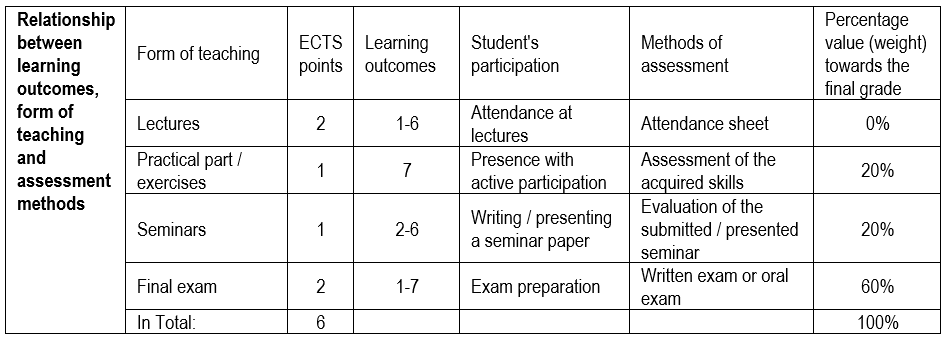Students get acquainted with physics in the world. Emphasis is put on those physical laws that are significant for the creation of biological structures and that are part of biological systems. They learn about physical phenomena that are the foundation of physiological processes. They learn about physical basics of measuring methods that are used in diagnostics and physical phenomena which are the foundations for some treating methods. The learn about basic application of some equipment in the dental practice. Students learn about quantity aspects of physical and other phenomena. They get acquainted with scientific, analytic and synthetic ways of thinking.
Mechanics. Application of laws of mechanics when analysing locomotor system of humans. Pressure, buoyancy, compressibility, pressure of equation, surface tension and capillary action. Bernoulli’s equation, heart activity. Flow of viscous liquid through thin pipes. Elastic quality of solid bodies and tissue. Fluctuations. Warmth and thermodynamics. Balance and unbalance of system condition. First and second law of thermodynamics.
Entropies. Bioenergetics. Thermodynamic potentials. Chemical potential. Mutual solubility. Humidity. Osmotic pressure. Donnan equilibrium. Substance and energy transmission. Membrane permeability.
Electricity and magnetism. Conductivity and magnetic induction. Bioelectric potential. Electric flux. Transmission of electric impulse to nerve.
Atom structure. Atoms, molecules, crystals. Intermolecular forces, water structure, hydration. Hydrophobic forces. Structure of biological macromolecules in membrane.
Waves and sound. Ear. Ultrasound. Electromagnetic waves and optics. Scintillation counter, eye. Light absorption. Light dispersion and fluorescence. X-rays.
Atomic nucleus and energy. Isotopes. Radioactivity. Decay and fusion of atomic nucleus. Sources of ionising radiation of high energy. Penetration of high-energy particles through matter and dosimetry.
Regulation in biological systems.
Required course materials:
- Jasminka Brnjas - Kraljević: Fizika za studente medicine, Medicinska naklada, Zagreb, 2001. ISBN: 9531761566.
- Jasminka Brnjas - Kraljević: Autorizirana predavanja (skripte).
- Literatura Katedre dana na web stranici Katedre: www.physics.mefos.hr
Upon completion of this course, students will be able to:
- Determine basic laws of physics and apply them in biological systems and the basics of biological processes at the molecular level and devices for medical diagnostics, and define the physical quantities and units used in biophysics and medical physics
- Determine the basic principles of quantum mechanics and apply them to the structure of atoms and molecules, explain the basic concepts of mechanics and hydromechanics and apply them to the human body and explain and define the basic concepts and laws of thermodynamics and explain the behavior of the human body as a thermodynamic system
- Apply the basic concepts of electromagnetism and thermodynamics to explain the transmission of a nerve signal
- Assess the mechanisms of interaction between ionizing radiation and substances, the effects that ionizing radiation can cause in humans, and recognize the importance and scope of dosimetry and define doses
- Compare the radiogram with the scintigram, echogram and images obtained by magnetic resonance imaging or computed tomography, and judge what they represent and what are the basic images of medical diagnostic methods.
- Critically evaluate the main physiological processes at the level of the cell, organ systems and the human organism as a whole and evaluate the connection of basic medical knowledge with clinical disciplines
- Identify basic laboratory skills, learn to operate simpler measuring instruments and interpret results



